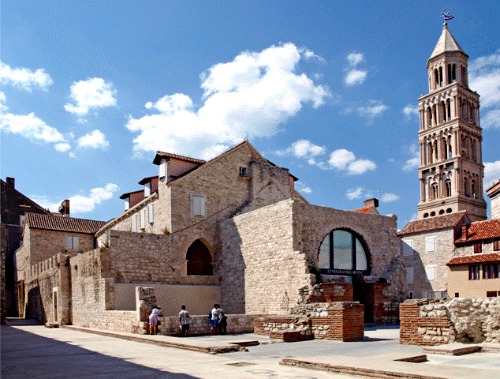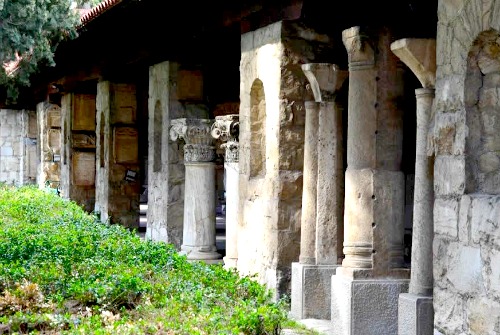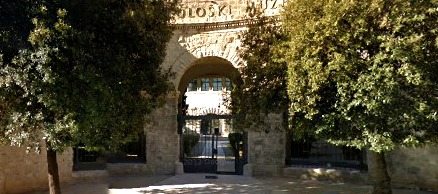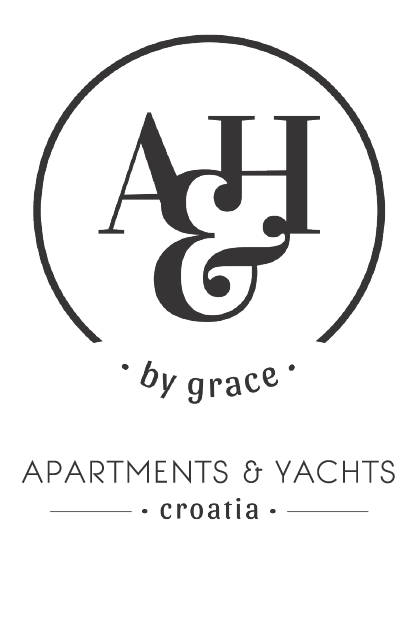Split has a long tradition of collecting and cultivation for monuments. The most of the cultural and historical traces, originate from, Salona, the largest site of ancient times monuments in Croatia. Salona was back in the 2nd and 3rd centuries AD a real cosmopolitan Dalmatian metropolis with 62 thousand inhabitants. The first museum was founded in Renaissance period by Split nobleman and humanist Dominik Papalic (today the Split City Museum) in 16th century. In his private palace he gathered a wide collection of ancient inscriptions, he found exploring through the ruins of Salona.
A Museum Under The Open Sky
One of the most memorable characteristics of Split city is Diocletian’s Palace, the historical urban core and unique museum, under the open sky. Nowhere can one, inside this palace measuring 175-181 x 216 meters, find the spectacular works of art in stone and wood from Split cathedral made by master Andrija Buvina in 1214 with Mausoleum built by Emperor Diocletian. The perfect and unique combination of Romanesque and Roman architecture.

Split Ethnographic Museum
This is one of the most fascinating Split Croatia museums and the oldest museum of its type in Croatia. Founded in 1910, it was located in Pjaca Square and from 2004 the whole museum’s collection moved to today’s position, just behind the the St.Duje Cathedral. Follow the Bene signs onto trails through the forest that lead down to the water.
The museum exposes the ethnographic objects from the area of Dalmatia and the wider area. It has very valuable collections of folk costumes, jewelers, arms, household inventory, traditional handicrafts. Specially interesting are embroidered costumes in the reconstructed rooms of typical peasant houses.

Archaeological Museum
Archaeological Museum in Split is the oldest among Split Croatia museums founded in 1820. The original museum building was erected in 1821 along the eastern walls of Diocletian’s Palace, but it soon became too small for the growing number of monuments.
Museum’s key historical finds are from the nearby Roman capital of Salona, containing the mosaics,sarcophagi, potteries and a large collection of ancient coins, covering the Greek and Roman periods. It’s located in vicinity of the National Theater. It’s a worthy attraction, just a short walk from Split Riva waterfront and old palace.

Split Maritime Museum
This museum is one of these, almost unknown among Split Croatia museums, usually rarely visited but considering seafaring tradition in Split, as an integral and inseparable part of city life.
The Croatian Maritime Museum is situated in the courtyard of the Gripe Fortress, which played a crucial part in Split’s history, especially during the Cretan war (1645-1669) and during the Turks invasion (in 1657), giving a shelter to the city’s inhabitants.
The museum displays development of sailing ships from ancient times through to the age of steam, such as model ships and images of Dubrovnik’s and Boka’s (Montenegro) sailing boats, as well as the other vessels from the Dalmatian area.
